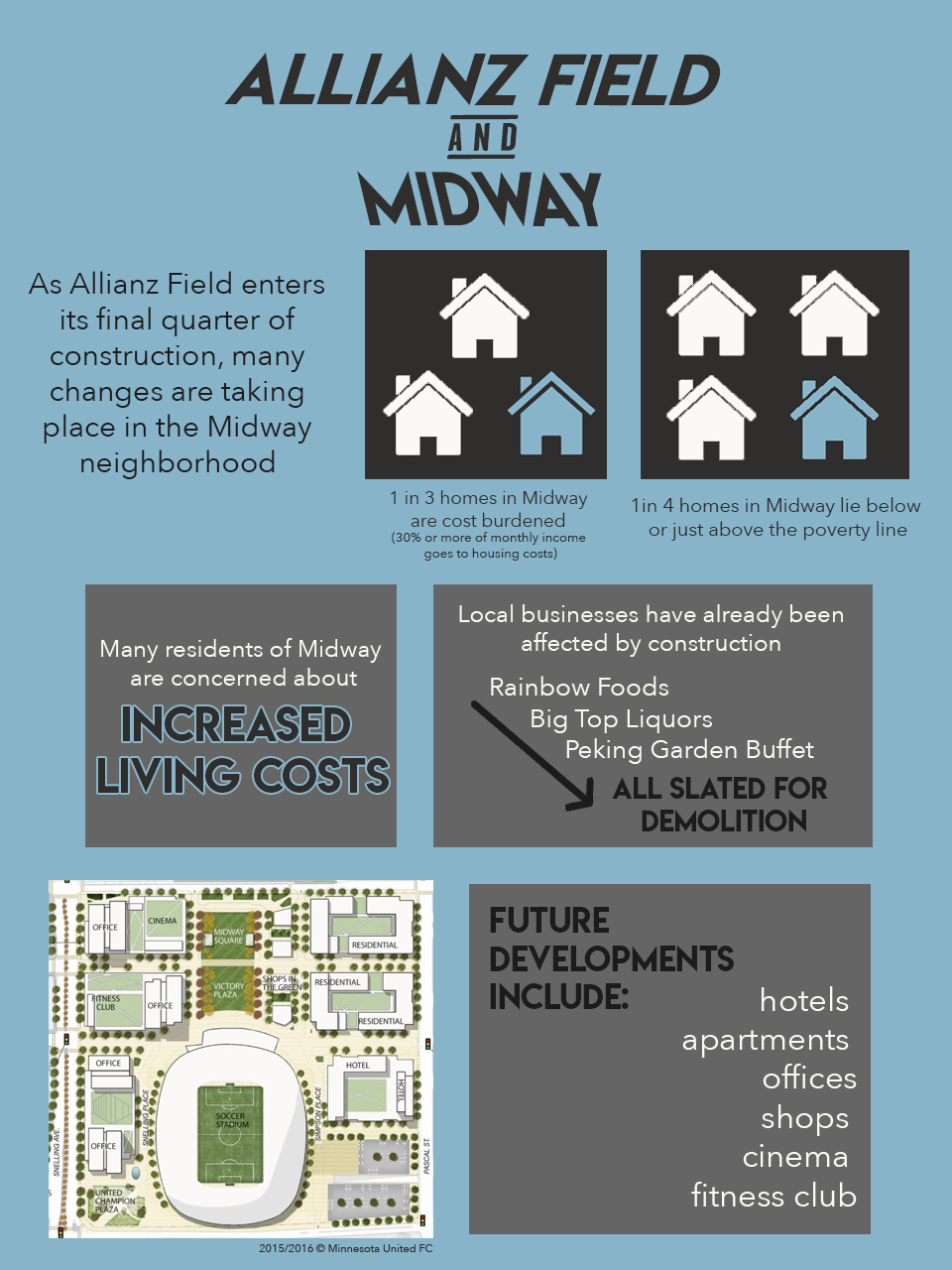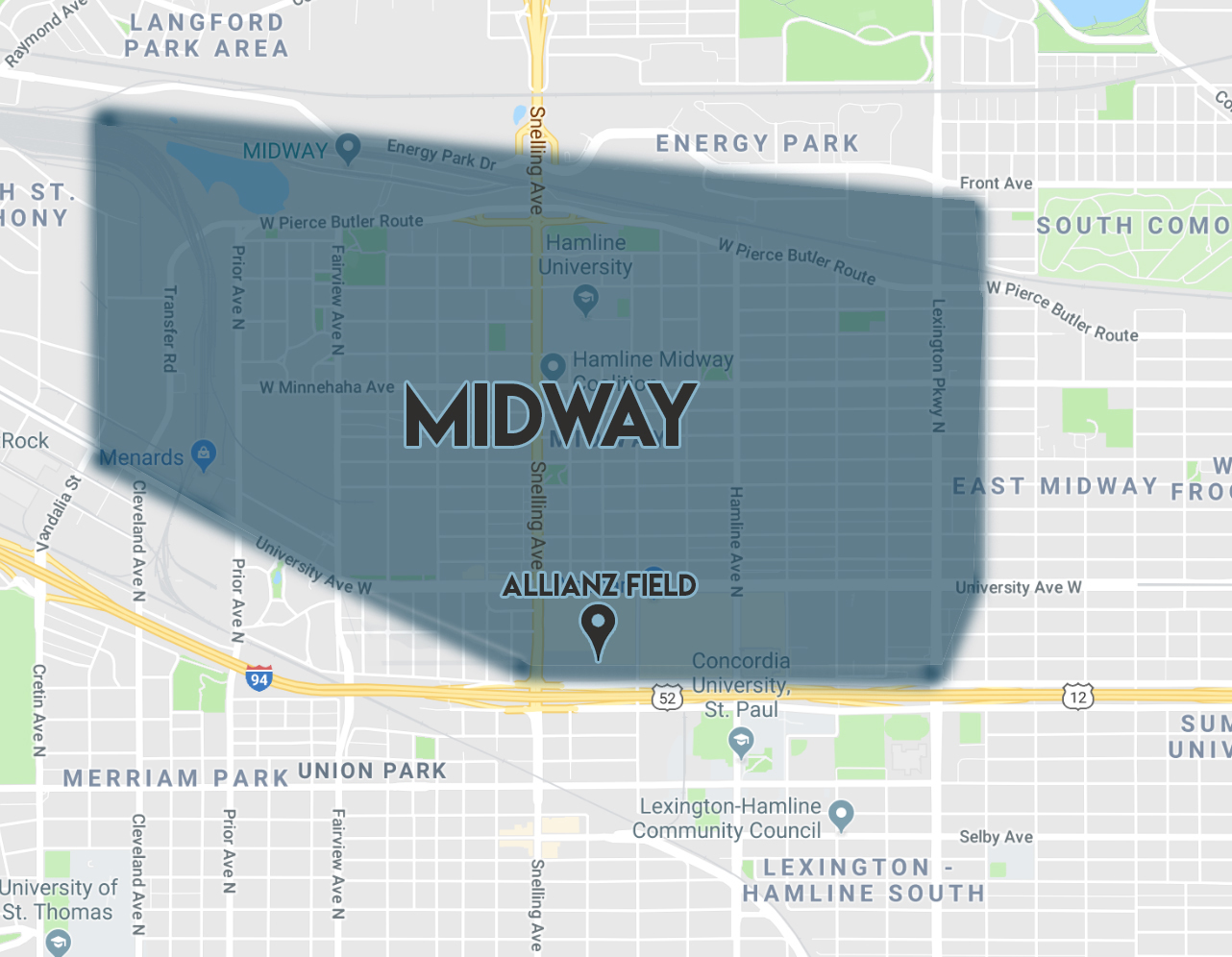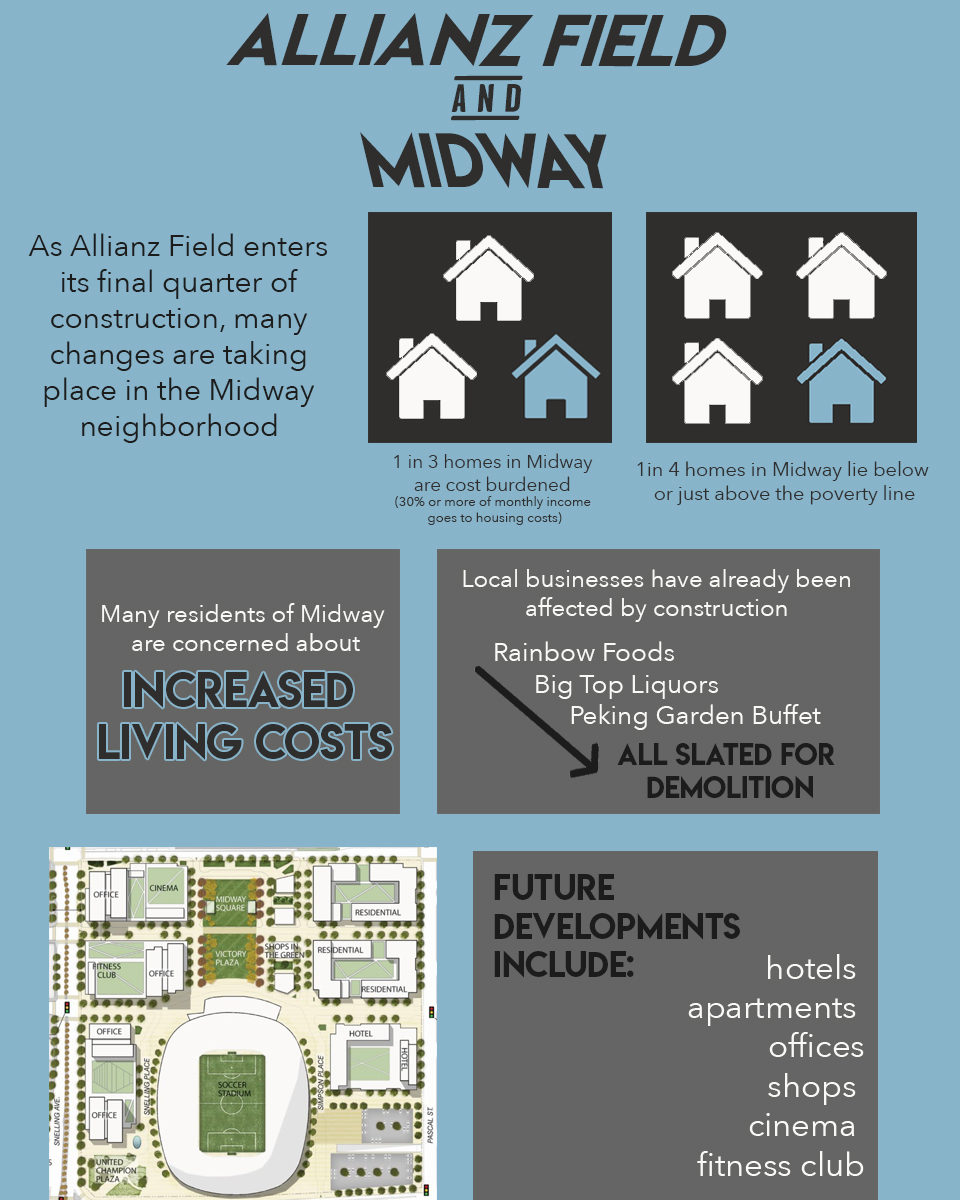
As Allianz Field, Minnesota United’s new stadium, enters the final quarter of its construction for 2019, some Hamline-Midway residents are concerned that the multi-year development plan will economically restructure the neighborhood and potentially alter its demographic.
Sitting along Interstate 94, the 19,400 seat stadium occupies vacant land that was once a Metro Transit bus garage. The full-block development from Snelling Avenue to Pascal Street will feature high-rise office buildings, a hotel, entertainment venues, retail, residential apartments and green spaces.
“Midway has been a part of the fabric of St. Paul,” said Jeremy Jacobs, Mortenson Construction lead developer. “Once on the site, we want to have a culture and a feel to celebrate which is inviting and welcoming to the community. Something that we can all be proud of.”
Though new plans for the stadium and its surroundings are underway, Rainbow Foods, Big Top Liquors and Peking Garden Buffet were forced to close or relocate as part of the demolition plans. Located just outside the new stadium is the Midway Shopping Center, which will eventually be torn down to make way for the new additions.
In the neighborhood for 40 years, Big Top Liquors was asked to temporarily relocate to a vacant Perkins restaurant at the end of the parking lot. The business was told that they could stay there for the next two and a half years before they will have to relocate again to a permanent nearby location.
“Long term, this will benefit us for the better,” said Tommy Applebum, owner of the Big Top and Sid Liquor chain. “But right now, it is a bit difficult because we just relocated to a store one third of the size of the one we were in. Also, with the construction of the stadium, it is not the easiest to navigate.”
Local business are not the only ones facing this change. Local residents say upgrading the neighborhood will be a big price to pay.
Historically, the Hamline-Midway neighborhood has been affordable and accessible. Located almost exactly halfway between Minneapolis and St. Paul, the area was originally built for Section 8 housing, a federal program that provides subsidized housing for families and individuals whose income is less than 50 percent of the region’s median income, resident Alexis Nicolle said.

According to a study from the Minnesota Compass, 23.2 percent of Midway’s residents live below the poverty line, and about 32 percent of households are cost-burdened.
With such a substantial portion of the population in this position, the fear of increasing expenses worries those who live here.
“I think that [the stadium] is bringing in a lot of opportunity for change in the area, and a place that has more to offer,” said Leah Schwartzman, a resident and senior at Hamline University. “But it will definitely increase the cost of living because it will be an area where more people will be attracted to.”
Though this new development plan for the region will provide more attractions, locals believe that it will not only increase living costs, but it will cause congestion in the already hustling region.
“I think it will be really good in regards to property value, but I am nervous about the amount of traffic,” resident Alexis Nicolle said. “It is really bittersweet in a way.”
Ava Diaz can be reached at diaz7981@stthomas.edu

